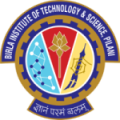“Multidimensional neuroimaging” is the course of Higher School of Economics for graduate and PhD students in frame of the iBrain project.
The “Neuroimaging Techniques ” course is one of the core introductory courses of the Programme that give and overview of the methodologies currently at place to study Cognition and Brain Function. Methods such as functional magnetic resonance imaging (fMRI), transcranial magnetic stimulation (TMS), Transcranial Direct Current Stimulation (tDCS) and Transcranial Alternating Current Stimulation (tACS), and others provide us with new insights into the structure and function of the human brain along with more widely used electroencephalography (EEG). Recently, with the advent of superconductivity, a multichannel magnetoencephalography (MEG), the method that allow to record the activity of the same neural population as EEG does, came about and have been successfully applied for localizing sources in the brain. Nature and origin of electric, magnetic, NIRS, and blood-oxygen-level-dependent (BOLD) responses will be discussed throughout the course. The course is recommended for students of the Master’s program who are using or going to use the advanced neuroimaging methodologies
This course consists of blocks:
1. Essentials of electroencephalography, EEG
Biophysics of EEG and basics of EEG signal analysis
2. Essentials of eye-tracking imaging
This topic is devoted to the indirect measure of brain activity which is eye-tracking. Basics engineering and biological principles of this methodology are considered here.
3. Essentials of magnetoencephalography, MEG
Biophysics of MEG and principles of MEG signal analysis
4. Essentials of transcranial magnetic stimulation, TMS
Biophysics and engineering of TMS methodology, fundamental brain research and clinical applications. Brain-navigated TMS.
5. Essentials of functional magnetic resonance tomography (fMRI)
Physics, biology, and engineering of fRMI. Principles of fMRI data analysis. SPM approach.
6. Essentials of transcranial electical current stimulation, TES
Biophyisics of transcranial direct current stimulation, tDCS and transcanial alternating current stimulation, tACS. Fundamental research problems and clinical applications.
Materials and books:
- Pelletier, S. J., & Cicchetti, F. (2015). Cellular and Molecular Mechanisms of Action of Transcranial Direct Current Stimulation: Evidence from In Vitro and In Vivo Models.
- Hari, R., & Puce, A. (2017). MEG-EEG Primer. New York, NY: Oxford University Press
- Poldrack, R. A., Mumford, J. A., & Nichols, T. E. (2011). Handbook of Functional MRI Data Analysis. New York: Cambridge University Press
- Everling, S., Gilchrist, I. D., & Liversedge, S. P. (2011). The Oxford Handbook of Eye Movements. Oxford: OUP Oxford
- The Oxford Handbook of Transcranial Stimulation. (2009). American Journal of Electroneurodiagnostic Technology, 49(4), 390–391. Retrieved from
Language: English










